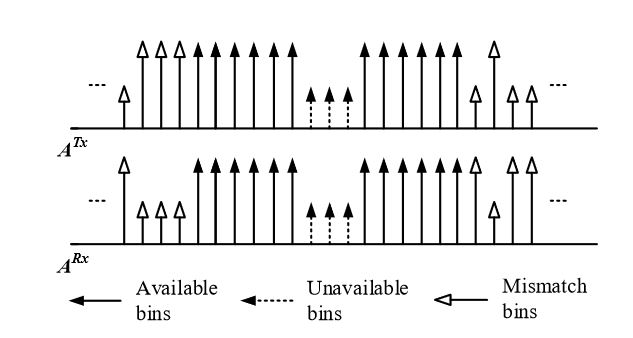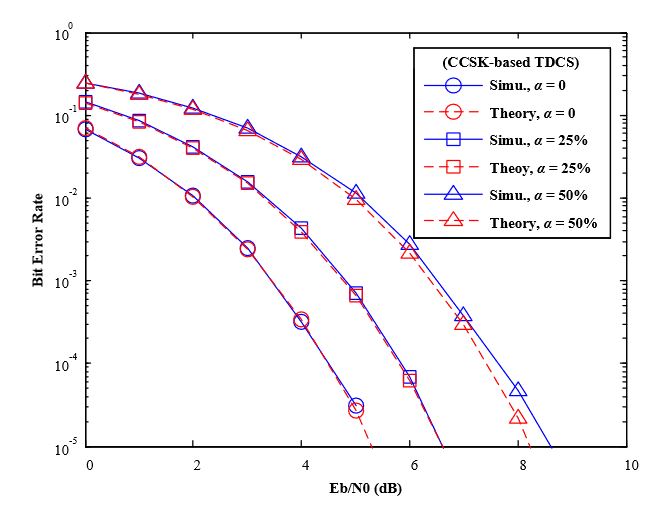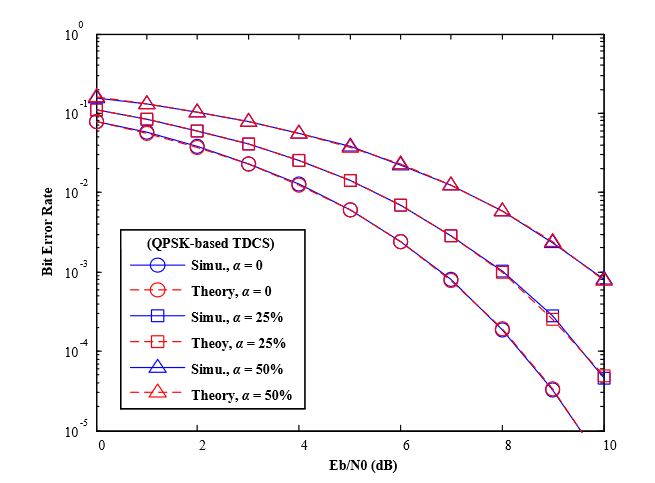ABSTRACT
Towards the era of mobile Internet and the Internet of Things (IoT), numerous sensors and devices are being introduced and interconnected. To support such an amount of data traffic, traditional wireless communication technologies are facing challenges both in terms of the increasing shortage of spectrum resources and massive multiple access. The transform-domain communication system (TDCS) is considered as an alternative multiple access system, where 5G and mobile IoT are mainly focused.
However, previous studies about TDCS are under the assumption that the transceiver has the global spectrum information, without the consideration of spectrum sensing mismatch (SSM). In this paper, we present the deterministic analysis of TDCS systems under arbitrary given spectrum sensing scenarios, especially the influence of the SSM pattern to the signal to noise ratio (SNR) performance. Simulation results show that arbitrary SSM pattern can lead to inferior bit error rate (BER) performance.
SYSTEM MODELS AND MODULATION SCHEMES

Figure 2. Block diagram of the TDCS transmitter (two modulation methods in one general diagram)
On the transmitter side illustrated in Figure 2, the pseudorandom poly-phase vector p is multiplied one-by-one with the spectrum availability vector A to generate a spectral vector, i.e., B = {B0, B1, …, BN−1} = A · P. A fundamental modulation waveform (FMW) b is yielded by performing an IFFT operation on this spectral vector B as follows:
SPECTRUM SENSING MISMATCH

Figure 5. An example of spectrum sensing mismatch
In wireless systems, the transceivers are often deployed seperately from each other additional interferences will be involved during such a process, which is even severe in IoT systems. It has been defined in IEEE802.22 that channel uncertainties are likely to introduce a mismatch between the spectrum sensing results. A typical example is depicted in Figure 5, which is named Spectrum Sensing Mismatch (SSM) in this work, where spectrum sensing result s for any certain spectral bins are different in transceiver.
SIMULATION RESULTS
In Figures 7 and 8, various mismatch factors are introduced to model various degree of SSM conditions. In spite of difference modulations methods in TDCS (CCSK or QPSK), Monte-Carlo simulation results match with our theoretical analysis perfectly. One observation is that, when the mismatch factor α increases, BER performance of the TDCS is deteriorated gradually, as both symbol detections suffer from the presence of SSM.

Figure 7. BER performance of TDCS-CCSK in AWGN channels (various mismatch factor α)

Figure 8. BER performance of TDCS-QPSK in AWGN channels (various mismatch factor α)
CONCLUSIONS
In this work, we discussed the TDCS system with respect to the IoT, where TDCS has proved to not only be a competitive candidate of traditional CR overlay technology, but also of great prospect in the IoT. However, due to some strict requirements, especially the need of ideal spectrum sensing results between transceivers, cognitive radio has limited its theoretical analysis and practical studies. This leads us to study the performance of TDCS in the presence of SSM.
By adopting an intuitive spectral bin representation and by investigating QPSK and CCSK, it is found that the influence of SSM can be analyzed deterministically through a mismatch factor by applying it to the original SNR, regardless of the modulation methods. Finally, a general mathematical analysis for TDCS performance under any proposed mismatched spectrum sensing pattern is proposed, which may trigger some inspiration for further studies.
Source: Renmin University
Authors: Chuanxue Jin | Su Hu | Yixuan Huang | Qu Luo | Dan Huang | Yi Li | Yuan Gao | Shaochi Cheng
>> More Wireless Mini Projects for Engineering Students